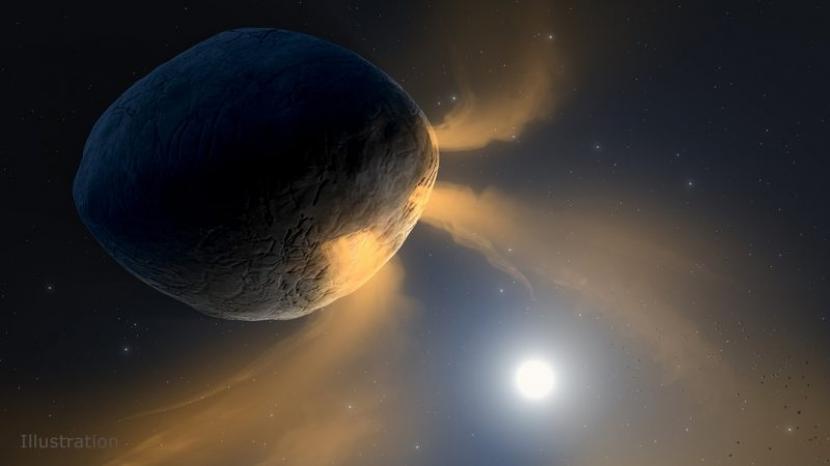Phaethon asteroid spins faster.
REPUBLIKA.CO.ID, TOKYO – The Japan Aerospace Exploration Agency (JAXA) intends to launch the DESTINY + mission to asteroid close to Earth Phaethon in 2024, aiming to fly over space rock by 2028, so this “potentially dangerous” asteroid has been intensively studied in mission leadership.
Researchers recently made a very important discovery about the Phaethon: it spins faster. The rotation period of the asteroid is reduced by four milliseconds per year. Even small changes like this can affect DESTINY + observations. Knowing the specific rotational speed allowed the team to more accurately predict the orientation of the asteroid when flying over the spacecraft, which in turn allowed the team to be more specific with their observations.
Once in a blue moon rotation of the asteroid changed. Phaethon is only the 11th asteroid known to show a change in its rotation period and is the largest of the space rocks, with an average diameter of 3.4 miles (5.4 kilometers).
Using data and observations from 1989 to 2021, Sean Marshall, a planetary scientist at the Arecibo Observatory in Puerto Rico, created a model to determine Phaethon’s shape in preparation for the DESTINY + mission.
“The shape model predictions don’t match the data,” Marshall said in a statement Space, Monday (10/17/2022).
“The times when the model was brighter were clearly out of sync with the times when Phaeton was actually at its peak. I realize this can be explained by Phaethon’s slightly varying rotation period sometime before the 2021 observations, possibly from a comet. activity near the perihelion [titik dalam orbitnya yang terdekat dengan matahari] to December 2020 “.
Marshall determined that the model that best fits the data includes constant rotational acceleration, in other words, a smooth decrease in Phaethon’s rotation period by four milliseconds per year.
“This is good news for the DESTINY + team, as the constant change means that Phaethon’s orientation during cross flights can be accurately predicted, so they know which areas will be illuminated by the sun,” Marshall said.
Scientists are still learning about Phaethon, and the DESTINY + mission will surely reveal more. But we know that although Phaethon is large enough and close enough to Earth to be labeled a potentially dangerous asteroid, scientists have determined that it poses no direct threat to our planet.
The researchers presented the findings at the 54th annual meeting of the American Astronomical Society’s Division of Planetary Sciences in London, Ontario, earlier this month.


